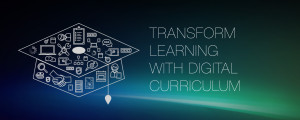When schools put devices such as Chromebooks and tablets into students’ hands, they also must teach students how to use the technology safely and appropriately. But students shouldn’t learn these critical lessons only in standalone workshops or assemblies.
For good digital citizenship to become a lifelong habit for students, educators must embed these skills into their daily instruction and model them in their own behavior. They must also involve parents in this process and begin the education early on in a child’s experience.
Start at a Young Age
“Kids are coming to school having already had some contact with technology,” says Mike Ribble, IT director for Manhattan-Ogden Unified School District 383 in Kansas. “Whether they have a knowledge of how to use it appropriately is another question.”
As an example, Ribble points to Common Sense Media’s report “Zero to Eight: Children’s Media Use in America.” According to this study, the percentage of children up to age eight who have used a mobile device nearly doubled from 2011 to 2013, from 38 percent to 72 percent — and 40 percent of children have used a mobile device before age two.
The report’s findings suggest that schools should start teaching digital citizenship to students at a very young age. In fact, Ribble strongly believes students should learn these skills throughout the K-12 curriculum. When schools teach digital citizenship using a “one-off event” such as a presentation or an assembly, students take in the information and then forget it over time, Ribble says. But if the topic is taught continuously throughout the curriculum, “that’s when it sticks.”
Transform Learning with Digital Curriculum
See how educators are creating powerful 1:1 learning environments with digital resources. Download Now
Four Keys to Effective Digital Citizenship
The International Society for Technology in Education (ISTE) has unveiled a new set of ed tech standards for students, which could help educators instill good online habits in their students throughout the curriculum.
The standards outline the knowledge and skills that students should learn and be able to demonstrate when it comes to technology use. They define four key elements of exemplary digital citizenship:
- Students cultivate and manage their digital identity and reputation and are aware of the permanence of their actions in the digital world.
- Students engage in positive, safe, legal and ethical behavior when using technology, including in social interactions online or when using networked devices.
- Students demonstrate an understanding of and respect for the rights and obligations of using and sharing intellectual property.
- Students manage their personal data to maintain digital privacy and security and are aware of data-collection technology used to track their navigation online.
Many schools teach online safety and responsibility by creating an atmosphere of fear: Don’t give out your personal information. Be careful how you act online. While these lessons are important, ISTE’s new standards aim to set a more positive tone by focusing on how technology can empower students, says Jim Flanagan, ISTE’s chief learning services officer.
For instance, students should learn how to use LinkedIn and other tools to build their personal networks and cultivate a positive digital identity that can lead to success in work and life. “The opportunity for one child to have a positive impact has never been greater,” Flanagan says. “We don’t just want students to be afraid, or they’ll miss that opportunity.”
Get Parents Involved
Parents must play a critical role in digital citizenship conversations. “Parents need to understand these concepts, and they need to be engaged in the process so they are reinforcing appropriate online behaviors at home,” Ribble says.
Ribble’s district uses a variety of strategies to reach parents, such as parent-teacher conferences, PTA meetings and social media. He encourages schools to hold open houses for parents in order to set clear expectations before handing out devices to students in mobile learning programs.
But even the best efforts won’t be effective unless teachers and administrators exemplify these skills and behaviors in their daily interactions with students. “As adults, we must be modeling effective online behavior and calling out inappropriate behavior when we see it,” Flanagan says, “or [we’re] giving students the opportunity to discover it for themselves.”
Looking to implement a digital literacy curriculum in your classroom? Here are some tips on how to meet the challenge.








